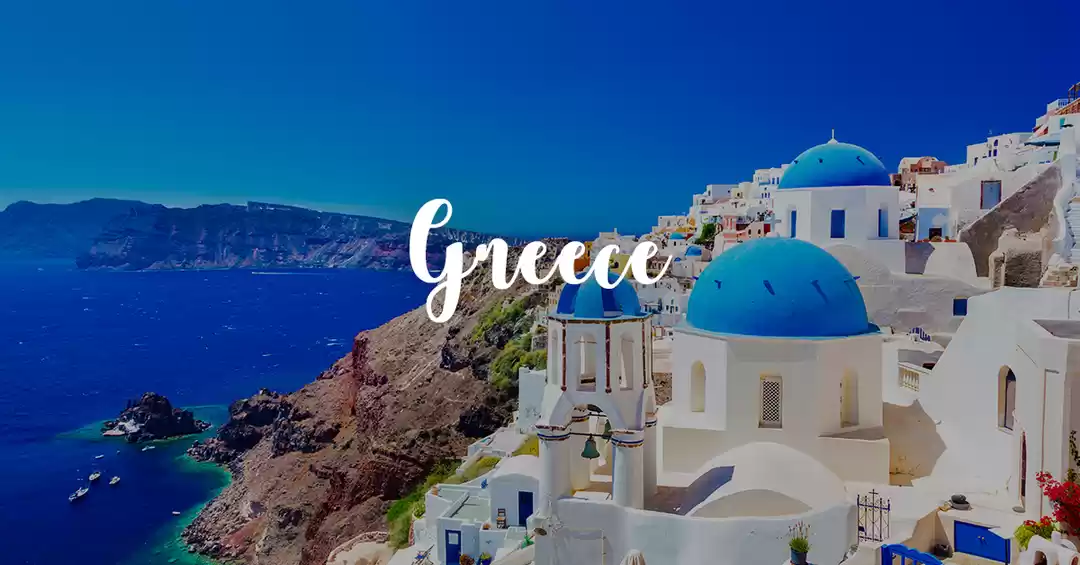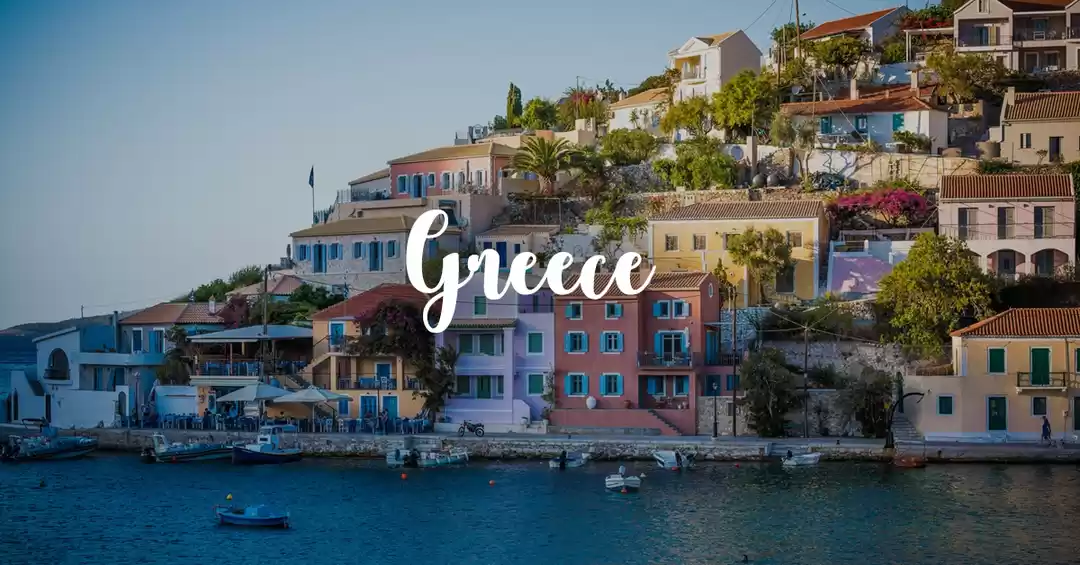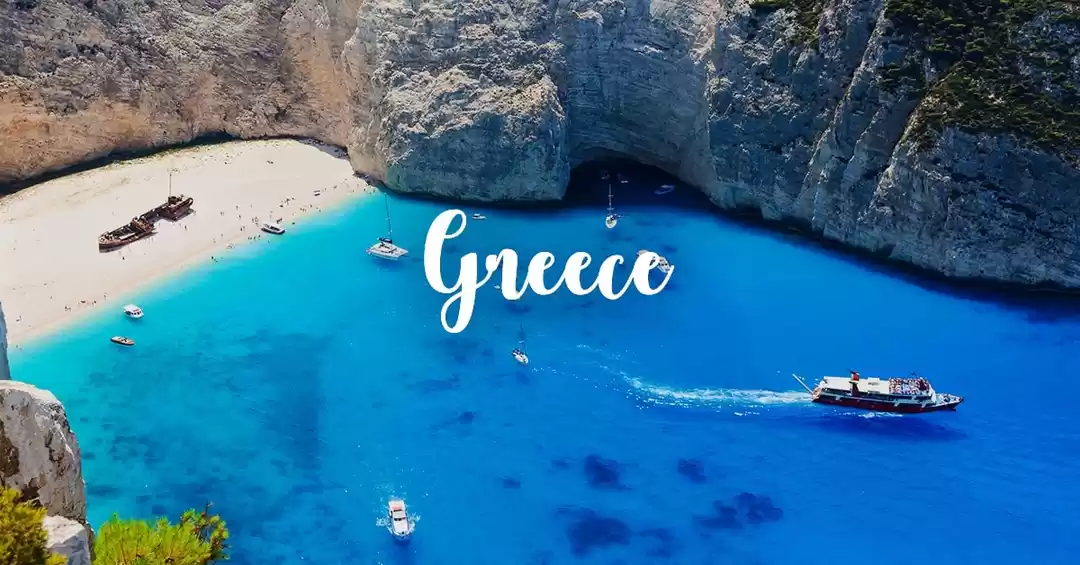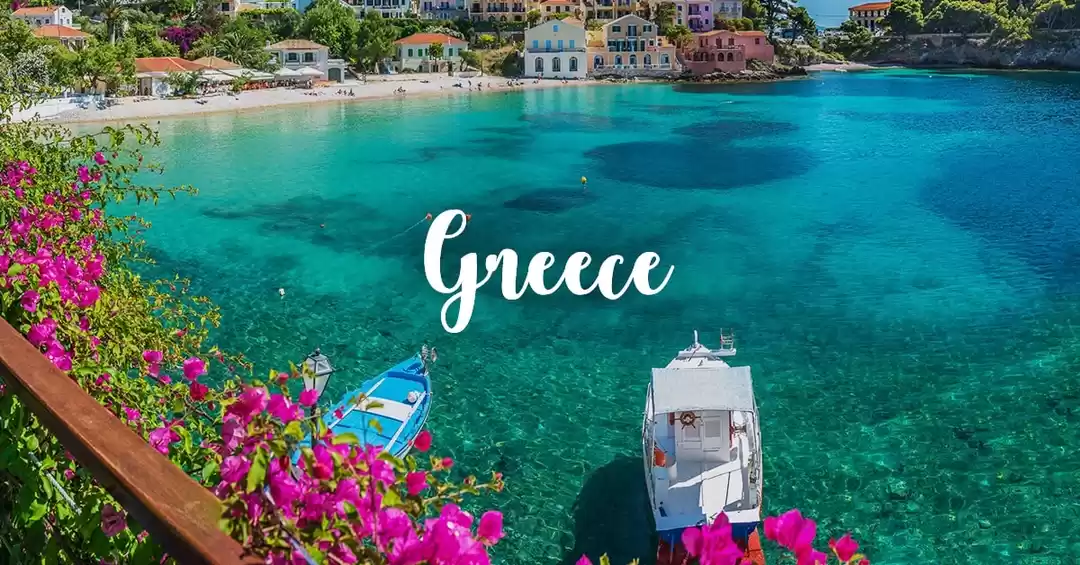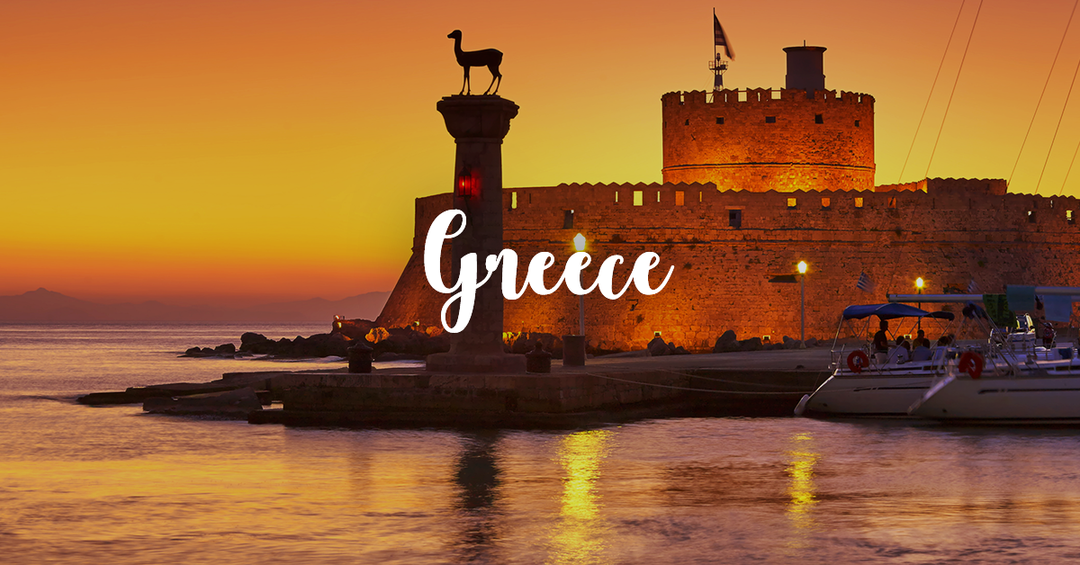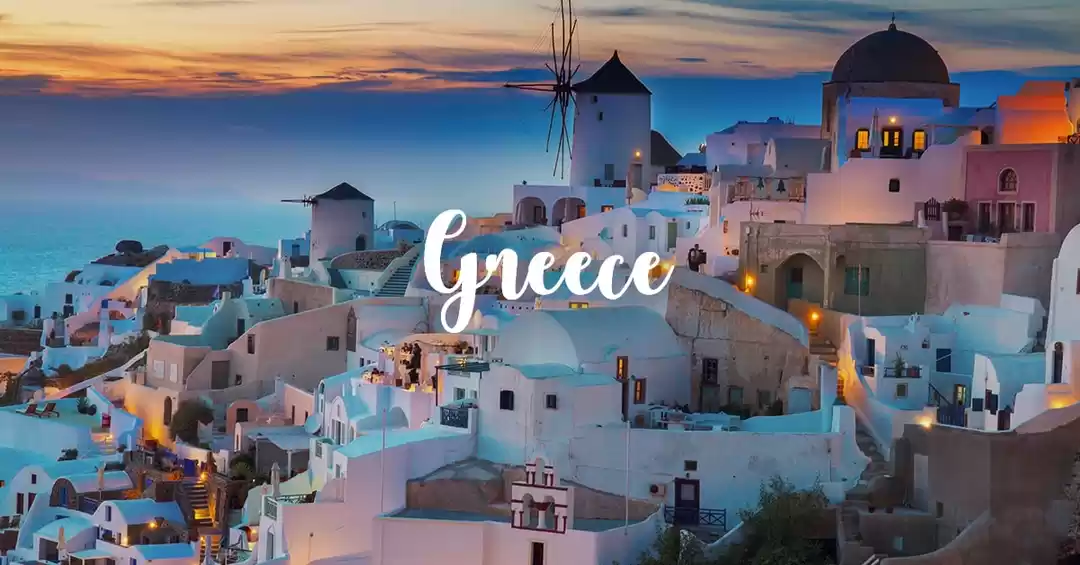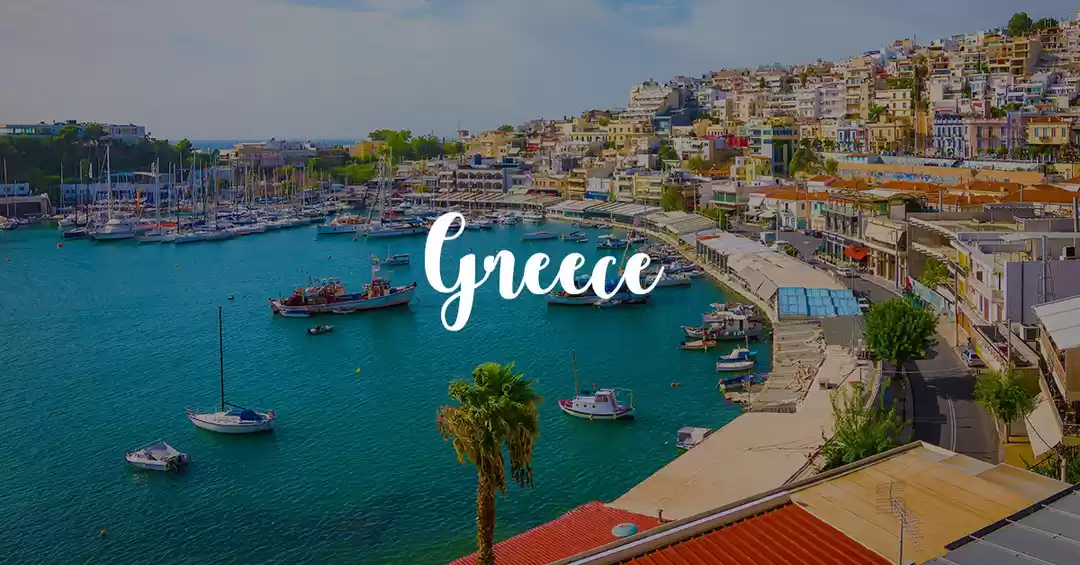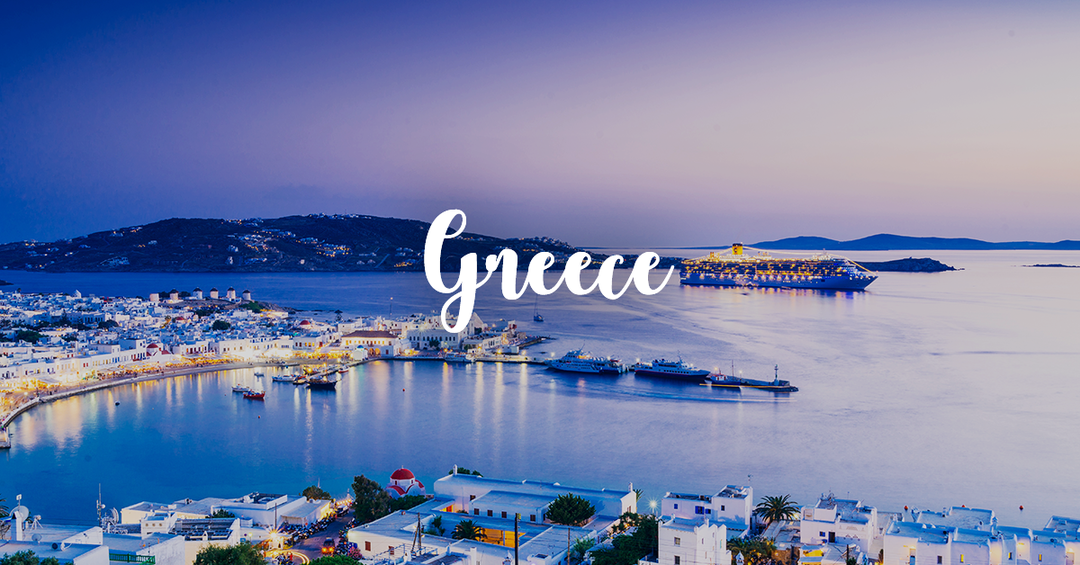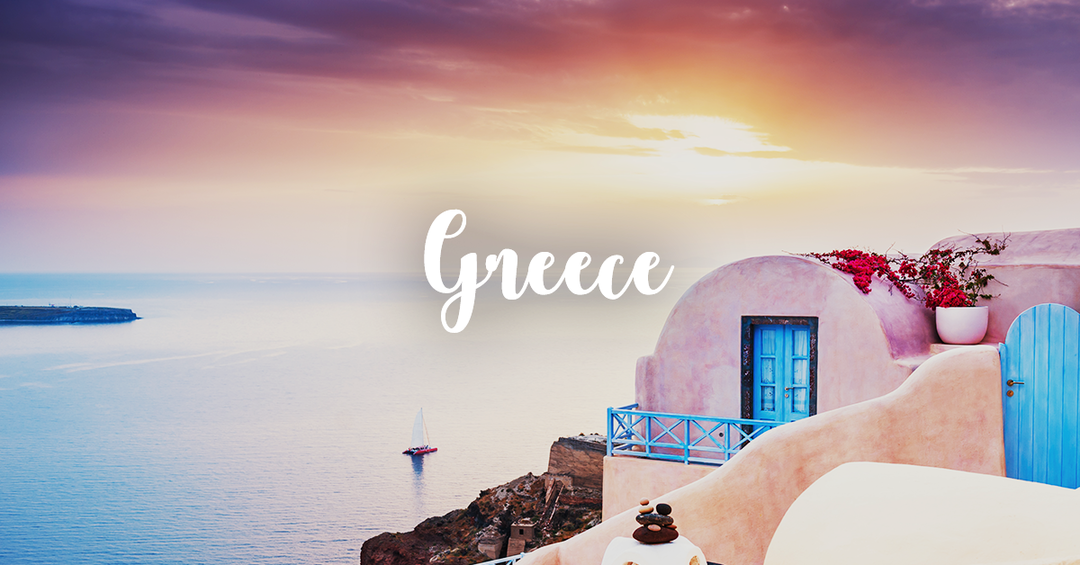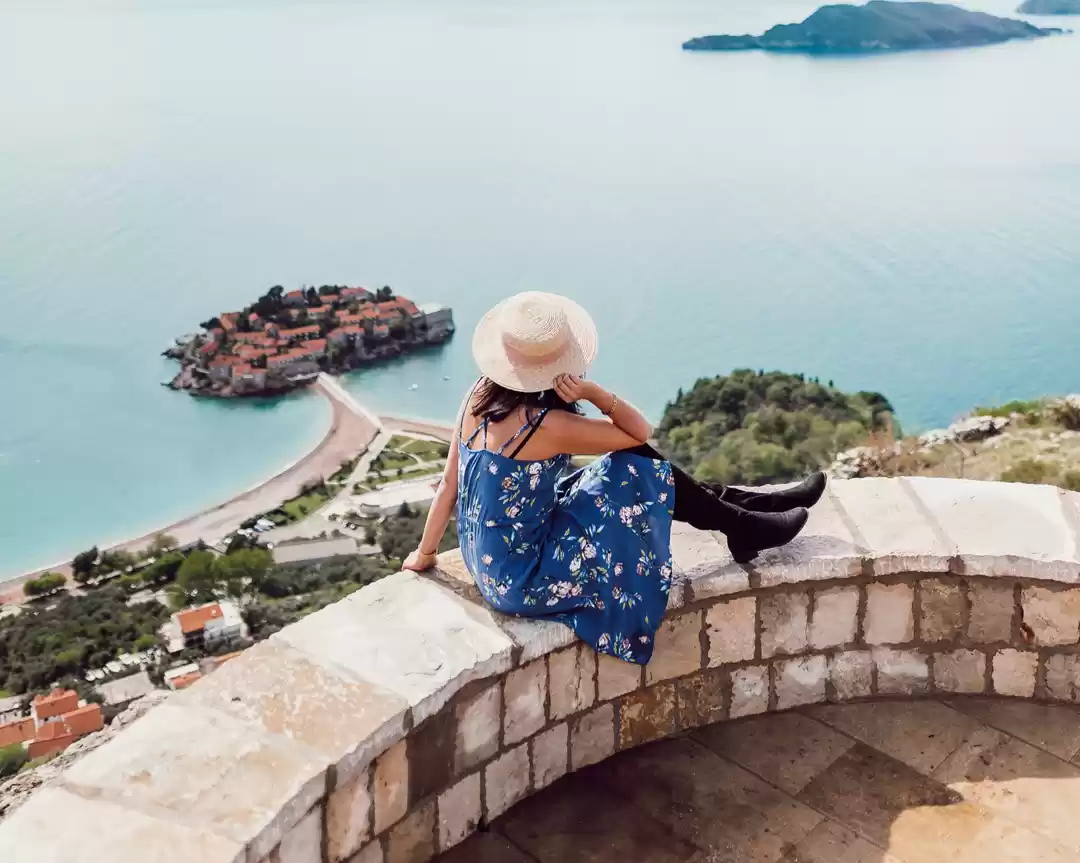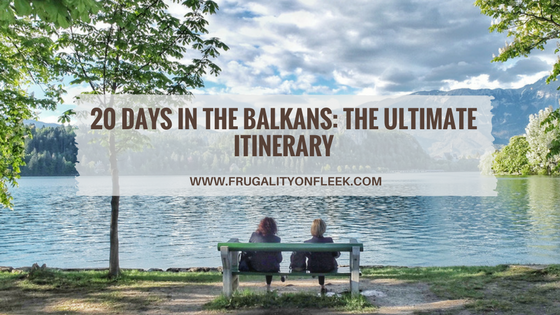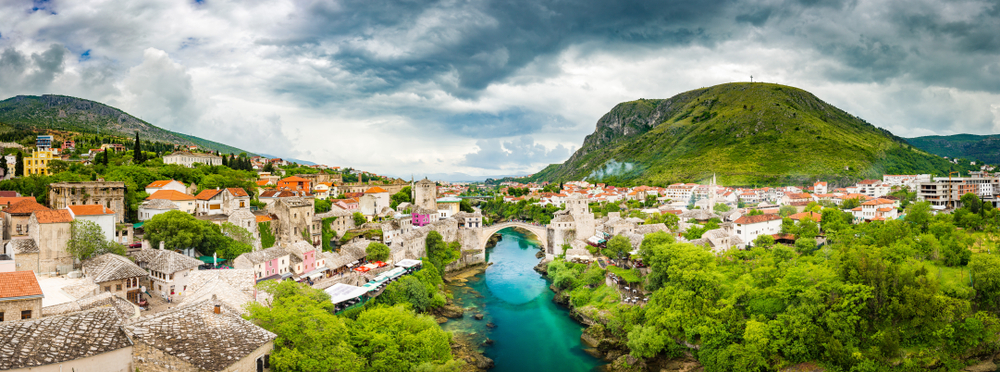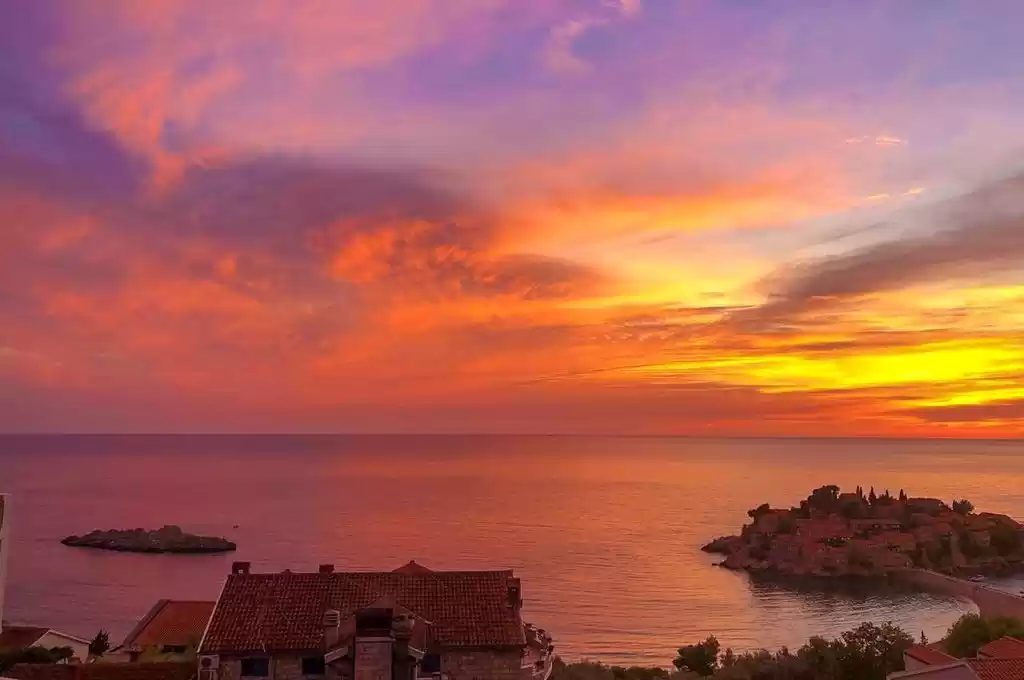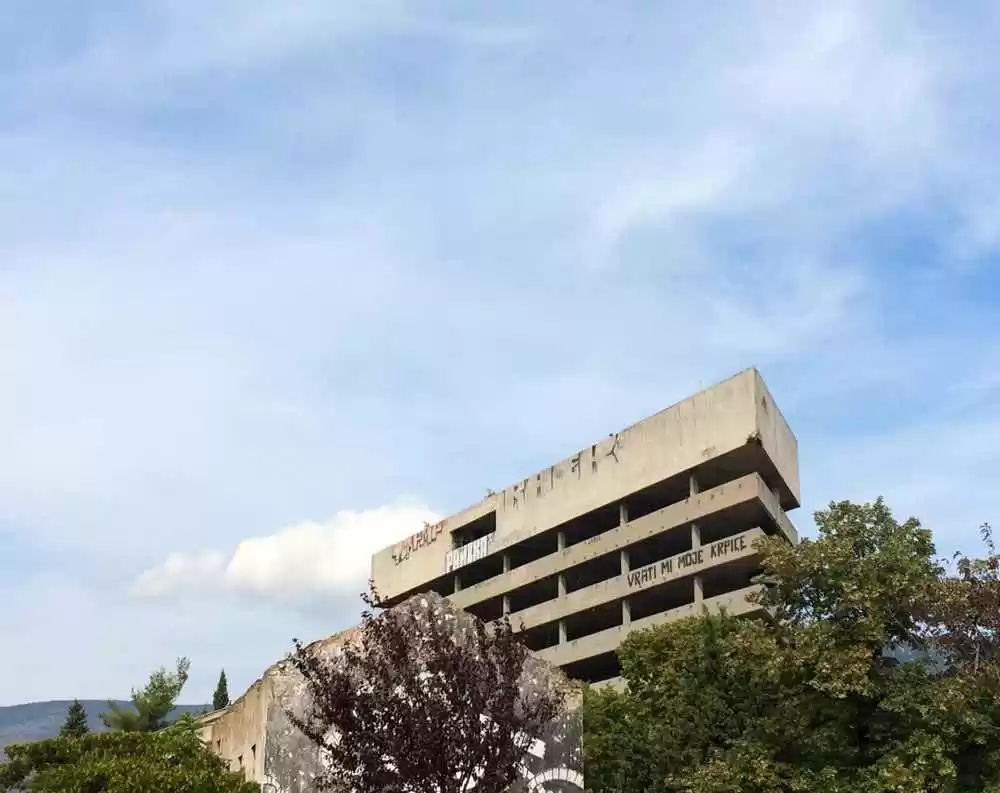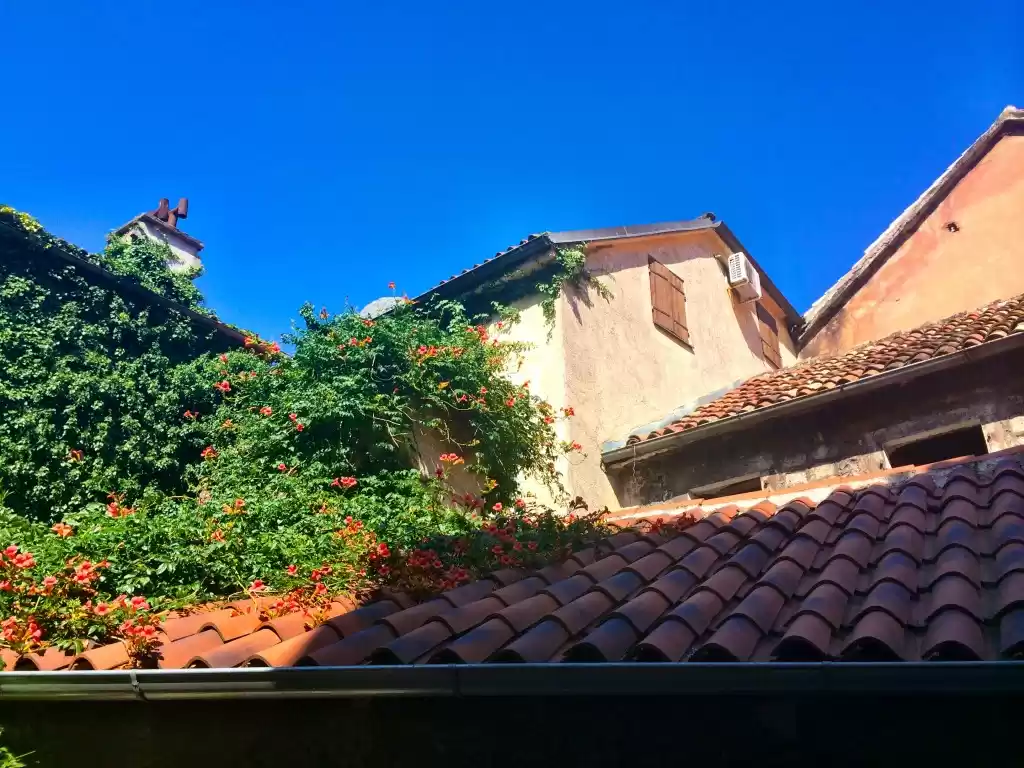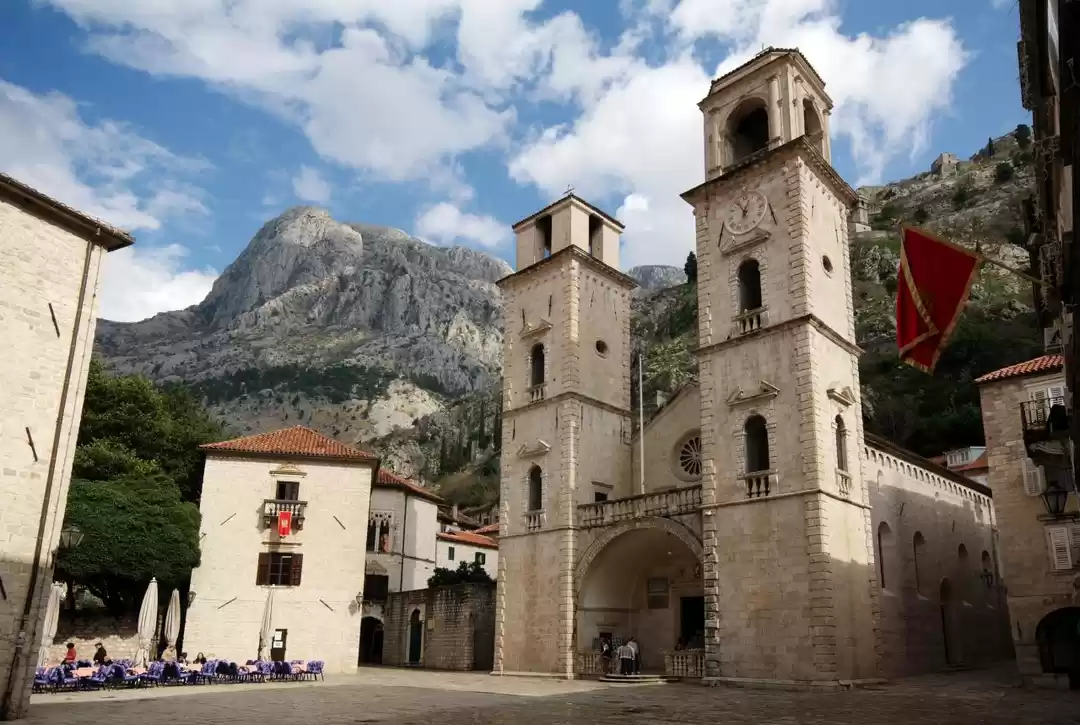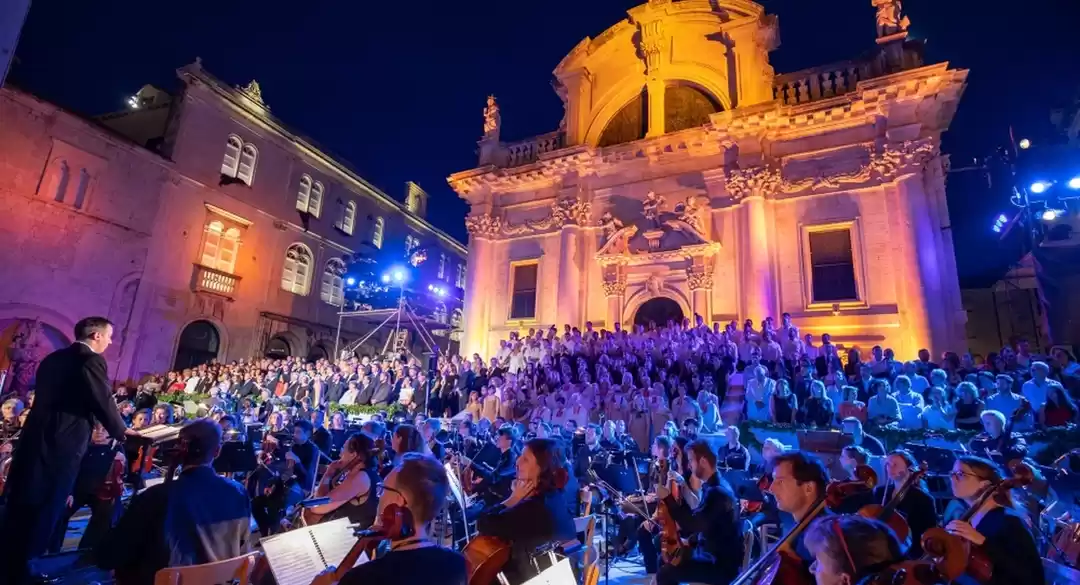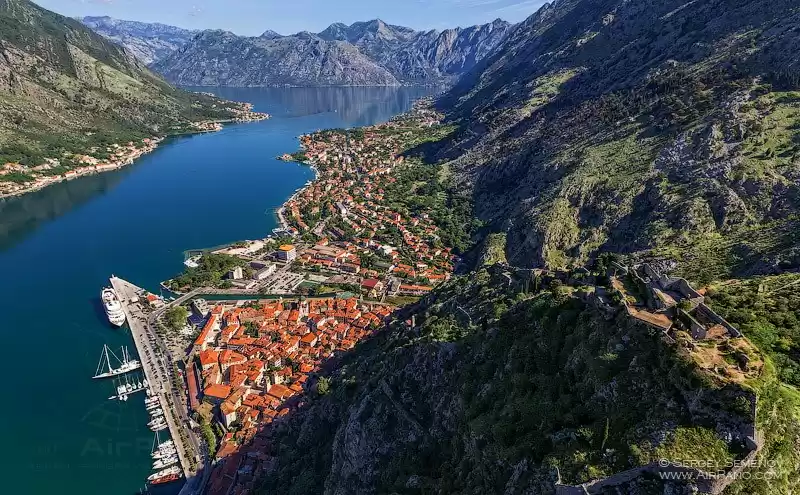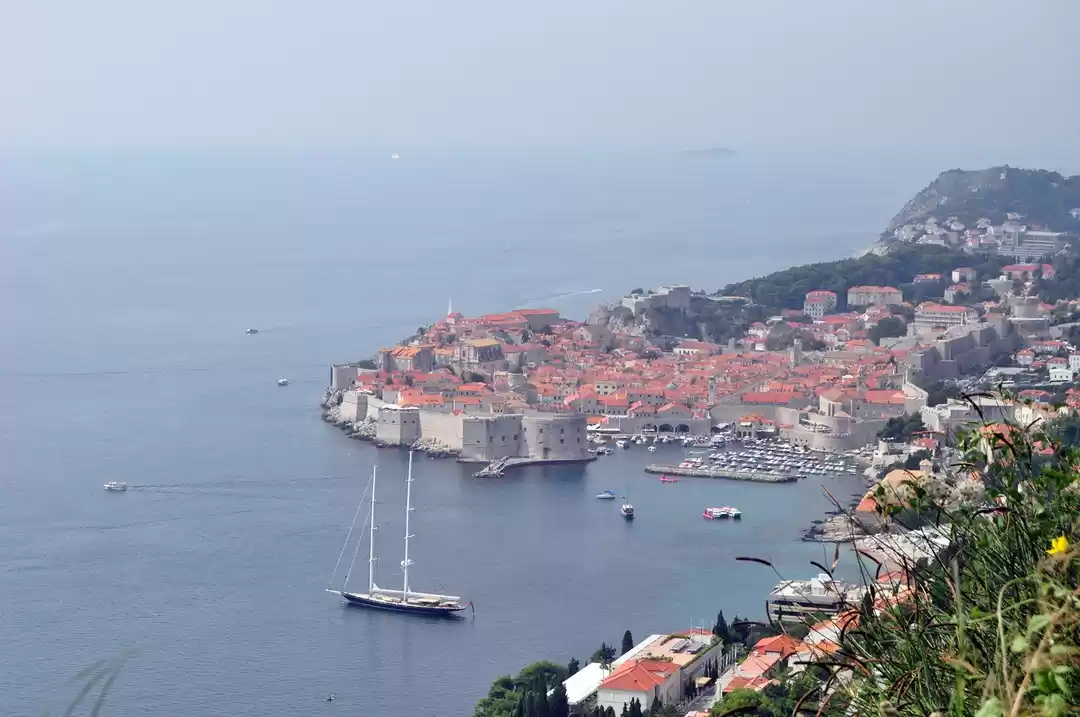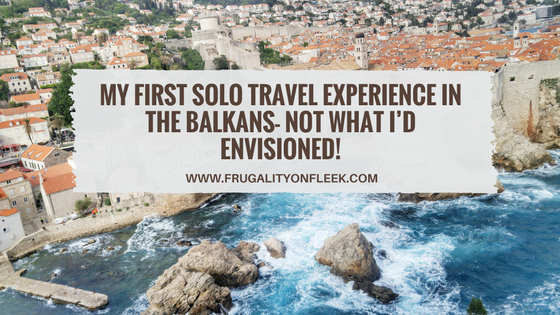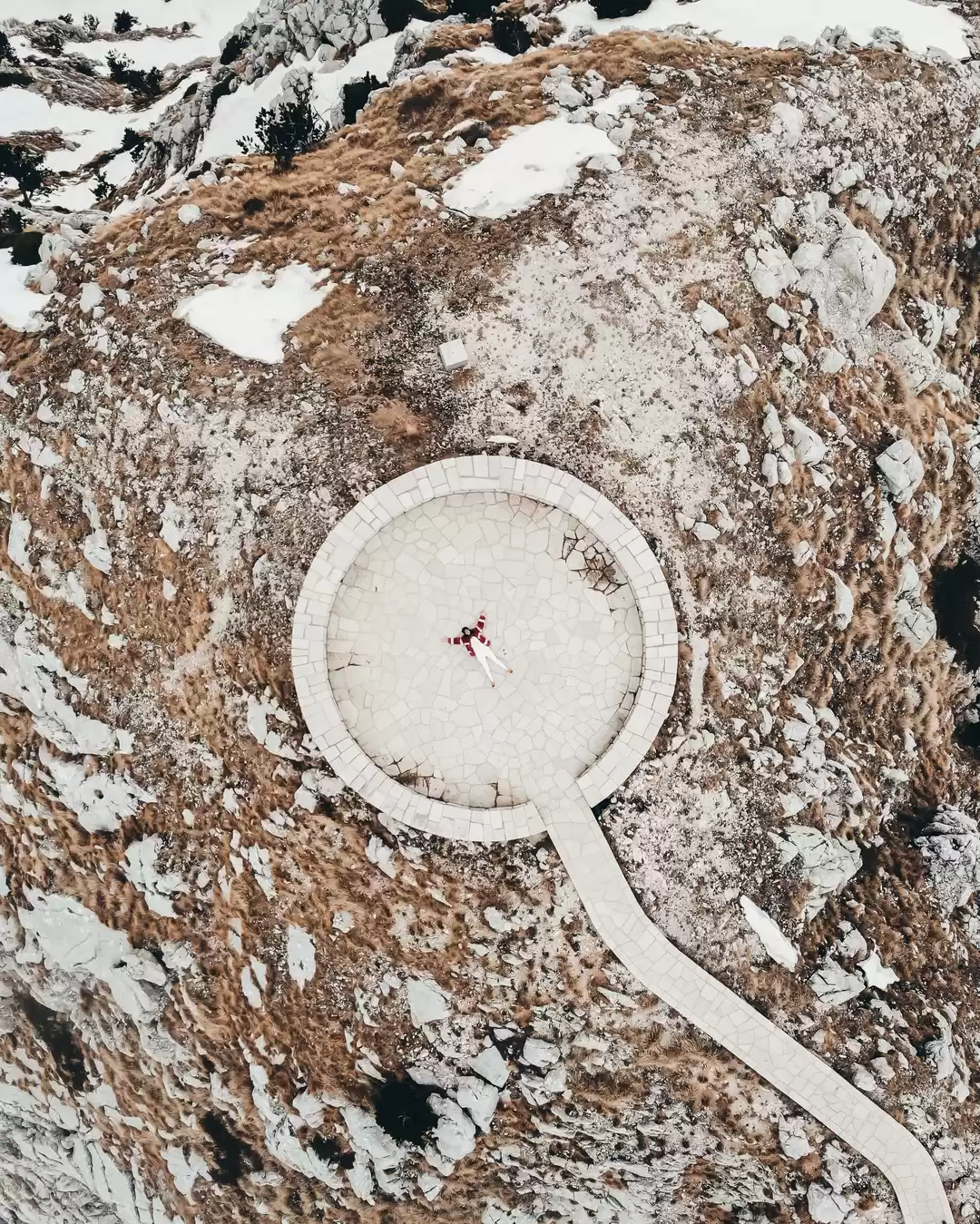http://blog.mohitsamant.com/2020/04/2-weeks-in-balkans-santorini-greece.html
My wife and I recently did a 2 week long trip to the Balkan Peninsula, with the last 3 days reserved for the enchanting Greek island of Santorini in the Mediterranean sea. Our trip started with getting the Schengen visa at the Greek embassy, and the process is pretty straightforward as long as you have all the documents ready. Also, this time we were lucky enough to get the visa for a whole year, so another Europe trip is on the cards pretty soon! Fortunately all of the Balkan countries accept the Schengen visa so it was pretty easy getting in and out of these countries by just showing the Schengen visa stamp in the passport.Split, Croatia: We started our trip with our flight into Split, Croatia. We landed in the afternoon around 1:30 pm after our hour long flight from Frankfurt, the overnight flight from Toronto the night before, so were very tired and got some much needed rest at our Airbnb. The next day, we went about exploring the town of Split. Split is the second largest city in Croatia and is a mix of modern buildings and ancient history. Ruins dating back to the Roman Empire and a bustling waterfront promenade. We started the next, and our only full day in Split with a trip to the old town and Diocletian's palace. Emperor Diocletian, who voluntarily gave up the throne of the Roman Empire, in the turn of the 4th century CE built the palace and after his retirement settled here. The ancient fortress has become the old town of Split, with numerous shops, cafes, restaurants and also apartments, located in the old buildings on narrow streets of the palace/fortress. After exploring Split downtown during the day, evening we picked up our rental car, for our road trip around the Balkans.


Bosnia & Herzegovina: We started our road trip from Split at around 9:30 am in the morning. We had pre-planned our trip for the Bijača Border Crossing. The crossing at the border was seamless and the only check, was for our Schengen visa, and with this being low tourist season, there was virtually no one ahead of us; or even waiting behind us. After getting the Bosnian stamps on our passports, we headed for our first stop - the Kravica waterfalls. Located on the Trebižat river, Kravica is one of the largest waterfalls in Herzegovina, and the most impressive. They have a natural pool dug out at the base of the falls by the constant rush of water. The entrance fee was 10KM(~$5.50 USD) per person and the parking was free. After about an hour trekking along the river, we were on our way to our next stop, the historic town of Počitelj. In 1471, Počitelj was conquered by the Ottomans, like the rest of Herzegovina. It remained a part of the Ottoman Empire until 1878 and after which, it became a part of the Austro-Hungarian Empire. However, the architecture is unmistakably Ottoman. The cobbled streets invite you on an exciting climb to one of two fortresses dominating the landscape. As you pass by the stone houses typically surrounded by high walls and grape wine pergolas providing shade for the few locals who still live there, street vendors will charmingly invite you to buy some of their fruits - figs, cherries or almonds. Along the way, very special trees will add to this atmosphere of the Middle East in the heart of Europe - wild pomegranates.Our next stop was the village town of Blagaj.Blagaj Tekija is a Dervish monastery outside Mostar, Bosnia, nearly 600 years old. Situated at the base of a cliff, next to the source of the river Buna, it's a unique and picturesque series of buildings that looks even better in person than it does in pictures. The Tekija (or Tekke) was first founded during the height of the Ottoman empire. Time and rock slides have led to extensive repairs and reconstruction to the buildings. Today, thanks largely to a Turkish travel agency, the Tekke looks mostly as it did in the past.

We had a quick lunch at one of the local restaurants which had the spectacular view of the cave and the river. Our last stop before heading to our destination for the day Sarajevo was the town of Mostar. For anyone travelling in Bosnia and Herzegovina or road tripping through the Balkans, a stop in the enchanting, historic city of Mostar is a must. The old town is absolutely captivating: think cobblestone streets that wind through a bazaar that seems untouched by the hands of time, the curved minarets of impressive mosques jutting into the sky on the banks of the Neretva River. The city's crown jewel is Stari Most, a grand stone bridge which sweeps across the water, making it the most photographed landmark in the entire country for good reason.Architecturally speaking, the most noticeable impact of the war was on Stari Most: originally built in 1566, the beautiful bridge was tragically destroyed by shelling in November 1993, collapsing into the Neretva. It took more than a decade of painstaking work to rebuild, eventually reopening in 2004 and earning a designation as a UNESCO World Heritage Site. Today, the Mostar bridge is considered a symbol of the city.
After another couple of hours of driving, we reached our destination for the day, the Bosnian capital city of Sarajevo. The city is tucked inside a long, thin valley and surrounded on all sides by forested mountains, and almost every crossroads and street corner provides at least a glimpse of an idyllic picture-postcard backdrop. During the worst moments in the city's history, when its inhabitants were targeted by snipers, this dramatic geography proved to be a terrifying drawback but, thankfully, the spectacular natural beauty of Sarajevo can again be admired and enjoyed. We did a walking tour with Sarajevo funky tours. The tour takes you through various stops in the old town and the guides explain the history associated with every corner of the old city.

Kotor, Montenegro: The next day morning, we left BiH for Montenegro. We took the M18 highway which later, in Montenegro, becomes the E762. The entire drive was breathtakingly scenic and probably the highlight of the entire 2 week trip in the Balkans. We reached our Airbnb around 5 pm in the evening, as we took some photo break during the, roughly, 5 hour point-to-point drive.


Next morning, we discovered Kotor, which is often dubbed as the "mini-Dubrovnik" due to its architecture and position in the Balkans, but Kotor is in a league of it's own and the comparison neither fair nor accurate. Located on a beautiful bay on the coast of Montenegro, Kotor is a city steeped in tradition and history, with remarkable scenic views. A UNESCO World Heritage site, the old city was built between the 12th and 14th centuries and is filled with medieval architecture and historic monuments. Extending over four kilometres, the city walls that have protected Kotor for centuries lead up to the fortress of Saint Ivan.The next day morning, we were supposed to have a speed boat tour of the bay, however, it was cancelled due to bad weather. Fortunately, though, since we had the rental car we could make a day out of it. We started off we exploring a little bit of the old town, but we quickly improvised a decided to go for a drive to the charming town of Budva. Budva's old town is one of the oldest settlements on the Adriatic Sea. At around 2,500 years old it's a beautiful and historical site. A wander through the town reveals ancient churches and palaces, all crafted from local grey stone. After exploring part of the old town, we had lunch at one of the local restaurants, and then went on our to next stop, a viewpoint titled the " Best view Kotor". The drive is about an hour and half from Budva but can also be reached from Kotor in the same time. We ended our day in Dobrota, a suburb of Kotor where we were staying. The next day was our last day of the driving around the Balkans, we were going to re-enter Croatia from Kotor, to explore Dubrovnik. We start off around 10 am, but since the drive was a short one, about an hour and half, we decided to stop in between at Perast. Perast is one of the most beautiful places in Kotor bay.Today it is often called the quietest town in Boka. Its narrow streets and numerous, mostly abandoned renaissance, and baroque palaces, testify about the former richness of the Kotor bay, and about the days when there used to be led a luxurious life of its inhabitants.
Perast used to be a town of sailors, and it was know by that even outside the space of Montenegro. We can see even today that famous stone housed and captain's palaces standing out. There are 16 preserved palaces in Perast, among them is the baroque palace Bujovic at the very entrance in Perast.


Dubrovnik, Croatia: We reached Dubrovnik around 2 pm, after stopping for lunch.Dubrovnik is one of the world's most magnificent walled cities, overlooking the calm blue Adriatic. Once the capital of the mighty sea-faring Republic of Ragusa (1358-1808), it's now Croatia's most upmarket destination. Historically, this diminutive republic was sophisticated, refined and cultured. Today, the pedestrian-only Old Town - packed with aristocratic palazzi and elegant Baroque churches, contained within sturdy medieval fortifications - draws hundreds of thousands of visitors annually.Touted as the Pearl of the adriatic, crystal clear waters glisten under the sun; boats, one of the primary forms of transportation in the area, dot the sea in every direction; and the medieval limestone walls of the Stari Grad that safeguard the roofed buildings are impressive. After returning our rental car, we checked-in to our apartment. We were going to spend the next three (and ended up being 4, due to our cancelled flight to Athens) days here, so we were not in a hurry to explore this magnificent city. The next day morning, we had booked an Airbnb tour guide to walk us through the old town. We met at the entry of historical old city near Miletićeva. After which we walked around old city and saw it's main buildings, streets and squares. The tour mainly consisted of a history lesson of Dubrovnik.







Dubrovnik's history has witnessed the changing fortune from borderland Mediterranean city-state to a bustling city. Originally called Ragusa, the city was founded in the 7th century as a refuge for coastal residents fleeing the advancing barbarians. From the outset, the city was protected by defensive walls. Part of the Mediterranean cultural constellation, but intimately connected to the Balkans, Catholic yet surrounded by Islamic and Orthodox neighbours.The new city-state was a crossroads between cultures and civilisations. The city thrived through extensive trade with other maritime ports such as Genoa, Pisa and Venice, and even Goa in India. Its continental trade networks also extended into the Ottoman Empire. At the beginning of the 13th century, Dubrovnik fell under the control of the most Serene Republic, staying under its control until 1358.Dubrovnik's ascent received a major blow in 1667 as a catastrophic earthquake destroyed a large amount of Renaissance art and architecture in the city. The Sponza and the Rector's palace were the only buildings that survived the natural disaster. The city was reconstructed in the baroque style that has survived intact until today. Despite the reconstruction, the decline of the Mediterranean as a hub for trade meant that Dubrovnik, like other Mediterranean ports, began a steady decline. By the time Napoleon arrived at the gates in 1806, the Republic of St Blaise was a shadow of itself.Due to its historic borderland status, Dubrovnik was significantly affected by the break-up of Yugoslavia. In the early 90s, Greater Serb aggression resulted in Dubrovnik suffering its most serious existential threat. Over two-thirds of the historic town's buildings were hit by artillery. The town's cobbled streets were struck by hundreds of direct hits. For the first time in history, the medieval city walls themselves received over a hundred direct hits. Many historic palaces were badly damaged by the resulting fires. The renowned Sponza and Rector's Palace, St Blaise's church, the Franciscan monastery and the Amerling and Onofrio fountain all suffered severely.The demilitarised status of Dubrovnik shows that the sole purpose of the siege that was to last until June 1992 was to damage the morale of the Croats during its war of independence. The shocking pictures of the siege on the world television screens and valiant resistance of the Croatian army resulted in the eventual withdrawal of the Serb Army. An international organisation led by UNESCO helped organise a successful reconstruction effort meaning that today Dubrovnik is again back to its former splendour.



Santorini, Greece: Our next stop after Dubrovnik was supposed to be Athens, however, our flight ended up being cancelled and so we ended up spending an extra night in Dubrovnik, and taking a one stop flight to Santorini, via Athens. Santorini is the southernmost island in the Cyclades. Its official name is Thera. This island is the site of one of the largest volcano eruptions in recorded history. About 3,600 years ago the volcano erupted, causing an enormous tsunami which hit the island of Crete, leading to the eventual downfall of the Minoan civilization. Now, Santorini is a water filled crescent of the remains of this ancient volcano. The towns of Oía, Fira, and Imerovigli are all perched along the rim of the caldera.We stayed in the town of Oía which is the most picturesque of the all. Our first full day we did a Oil and honey tasting experience. We were served organic, extra virgin oils for tasting, as well as four different honeys, flower, pine, heather and cotton honey. The oils were accompanies with crackers, breadsticks, cherry tomatoes, feta cheese and "raki", the local traditional drink.


We ended the day with a sunset walk around Oía.Walking from Fira to Oía is one of Santorini's top experiences. The next day we hiked along the rim of the caldera from Fira to Oía, with Imerovigli and Firostefani along the way, and enjoyed some of the most beautiful views of the islands. Adjacent are some of the photos from the hike. Our last day in Santorini was the flight back to Athens and then next day from Athens back to Toronto, Canada. This brought to an end a wonder 2 weeks in the Balkan peninsula of Croatia, Bosnia & Herzegovina, and Montenegro, and the Greek island of Santorini. All destinations mentioned here should be on a must-do bucket list for any avid traveler.
What businesses did we use?
Flights: United.com (Lufthansa & Croatian), and (AA.com) British Airways (Booked for $210 USD/person with miles)Car Rental: Nova Rent-a-car (Croatia, BiH and Montenegro 5 days for ~€300 with full insurance)Tours: https://sarajevofunkytours.com/, Dubrovnik city tour and Santorini oil & honey tastingAirbnbs: Split, Sarajevo, Kotor, Dubrovnik, Santorini, Athens



